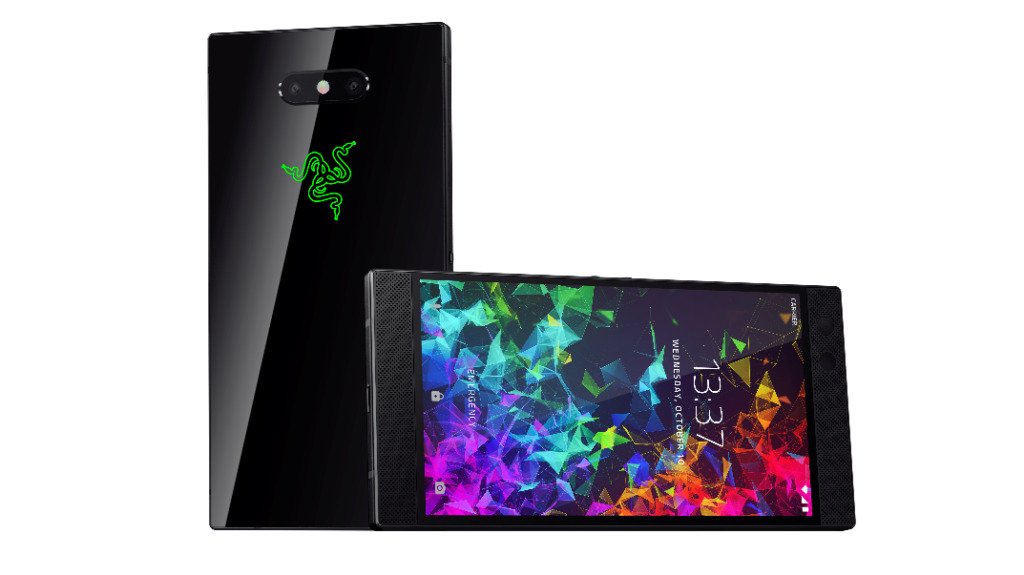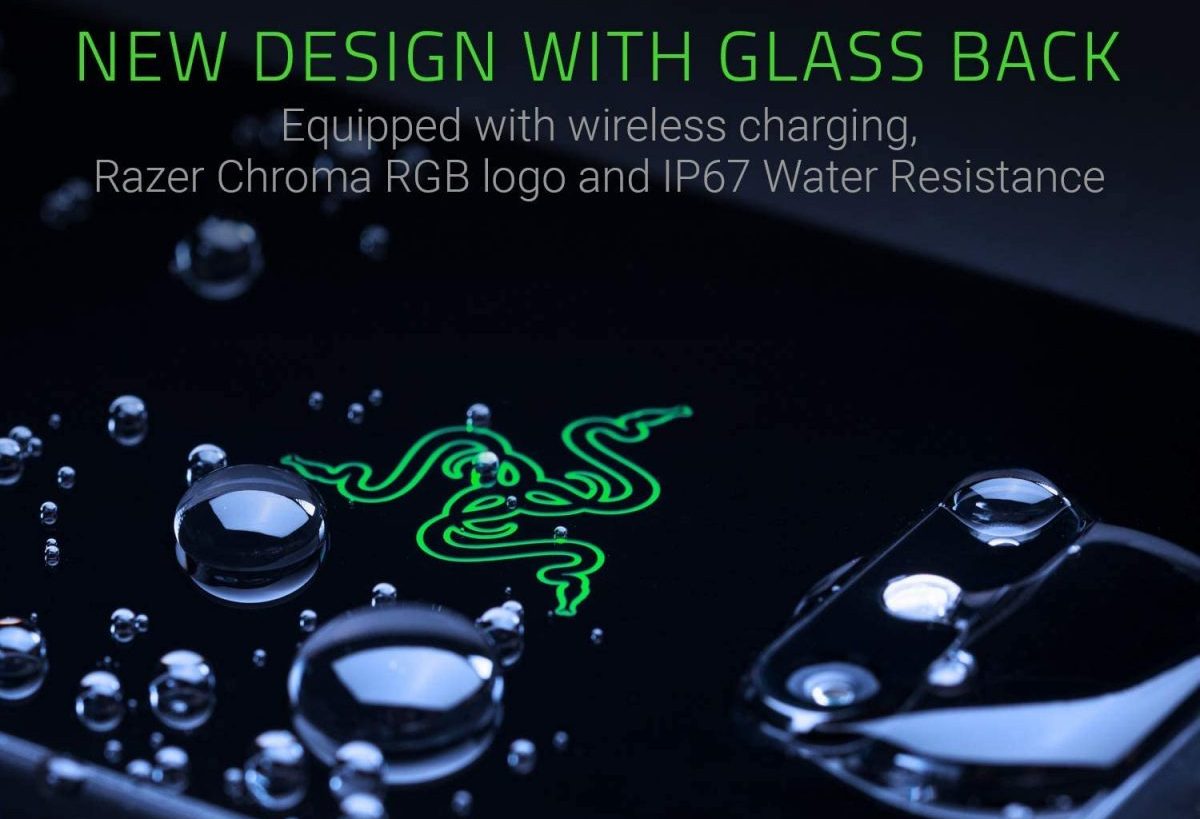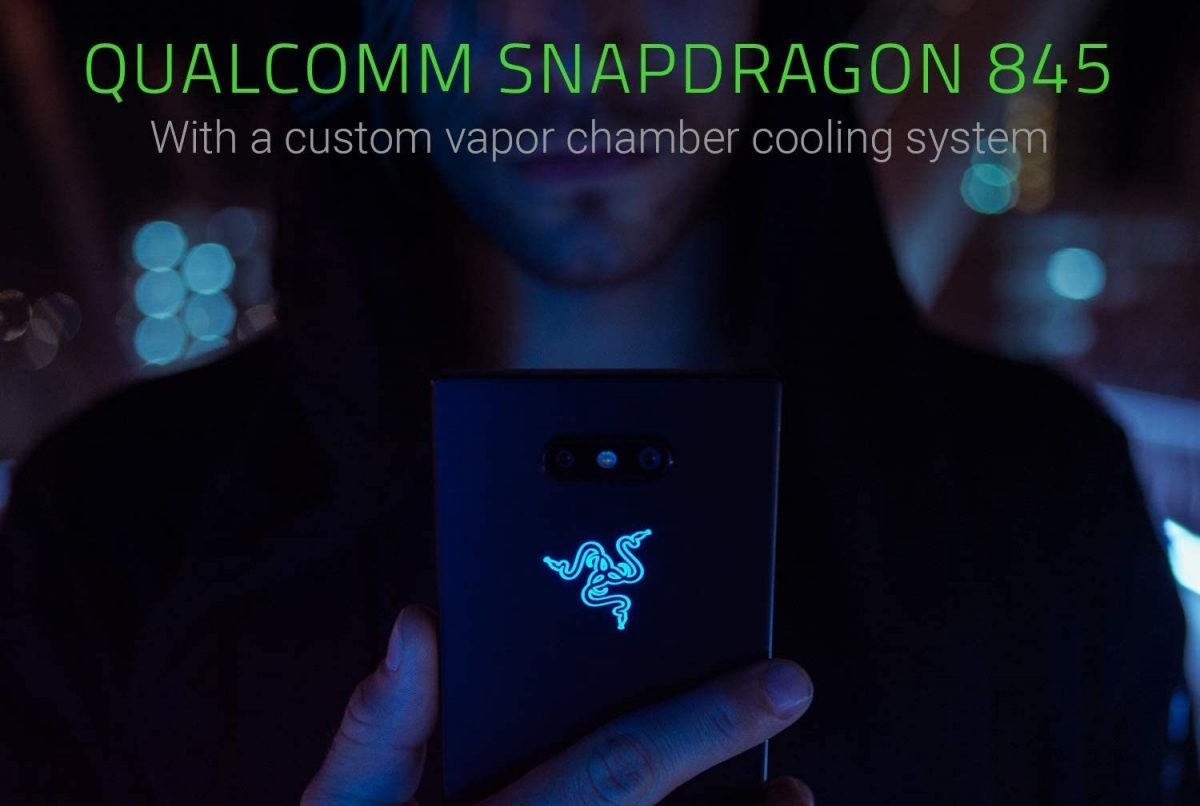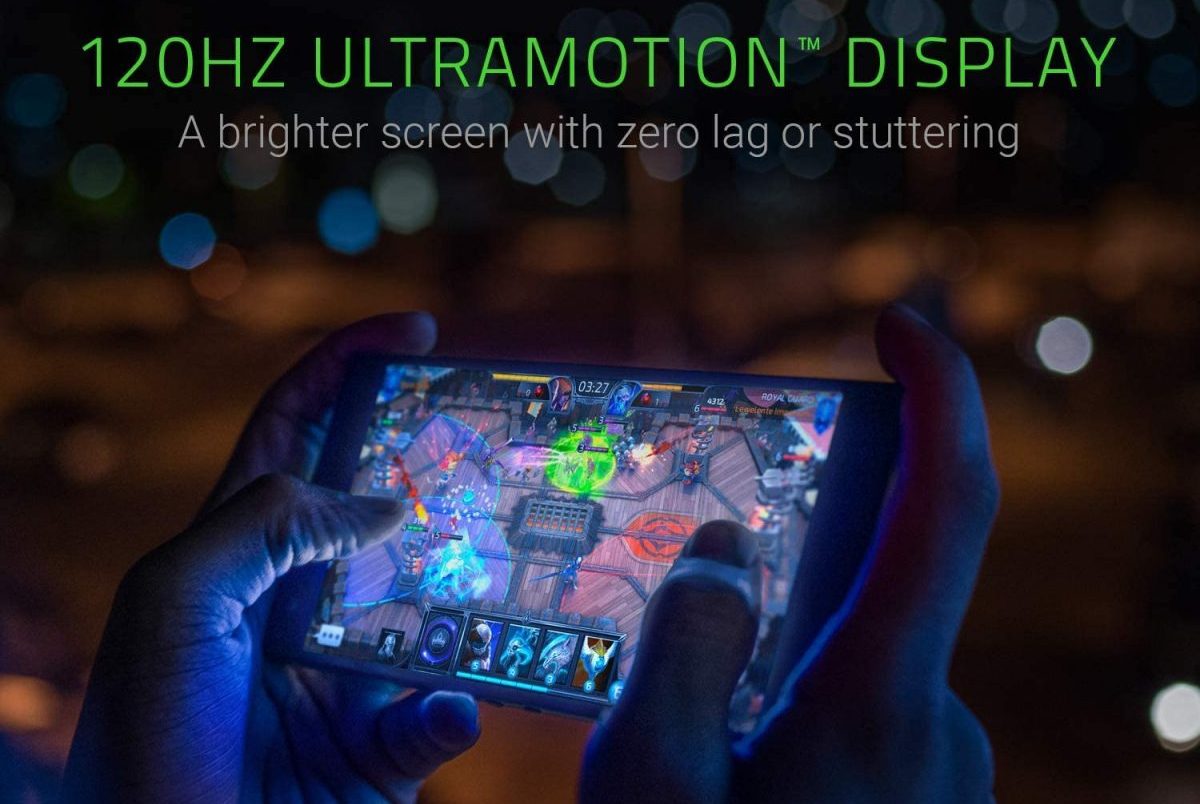We know Razer as an undisputed provider of gaming accessories may it be for computers, consoles, or mobile. Its gaming gears were second to none, dominating the shelves for headphones, controllers, and monitors. But Razer didn’t stop there. In 2017, it made a bold move by launching its own brand of a smartphone that seeks to challenge the titans of the industry. Now on its second iteration, shall the Razer Phone 2 continue to hold its glow nowadays?
In this article, we’ll take a look at the things that will make Razer Phone still worth or not worth it more than a year after its birth.
Inside this Article
Razer Phone 2 at a Glance

| Name | Next Step |
|---|---|
| Original Pricing | $799 |
| Processors | Snapdragon 845; Octa-Core |
| Operating System | Android 8.1 |
| Display | 1440 x 2560 pixels, 16:9 ratio; 5.72-inch 120Hz QHD |
| Battery | Li-Po 4000 mAh |
| Cameras | 12 MP, f/1.8, 25mm (wide); 12 MP, f/2.6 (telephoto); 8 MP, f/2.0 (selfie) |
Razer Phone 2 is Razer’s latest take on gaming phones that promises to give users a high-end gaming PC experience on mobile. Ideally, it will give you an edge over other mobile gamers for its powerful processor, better ergonomics, and sharp graphics.
The device kept the things we love – some we hate – about its predecessor with a long list of improvements. It has the same boxy design with an upgraded Gorilla Glass protection plus IP67 water resistance. On the backside, it has the Razer logo with a nice touch of chroma lights. Performance-wise, its Snapdragon 845 chipset makes processing swift. Its 8GB RAM and 64GB expandable memory are adequate for moderate to heavy gaming.
In terms of the battery, we would say that it’s neither a hit nor a miss. Razer Phone 2 is equipped with a 4,000mAh battery, which is powerful for a casual phone. But for a gaming phone, Razer could have done better.
Pricing: Cheap for a Premium Gaming Phone
Razer Phone 2 is comparatively cheaper than most of its peers such as the ASUS ROG Phone 2 and OnePlus 8 Pro. They might be in a different league in terms of performance, but Razer Phone 2 can easily go against them, economically speaking.
For $799 or a lower price tag, it has a lot to boast that goes at par with most flagship smartphones of its generation: a fast screen refresh rate, better audio than most Android phones, and game boost mode. So, if you are looking for a premium gaming phone without you feeling ripped-off, Razer Phone 2 is definitely one to consider.
Build and Design: Glass, Boxy, and Slippery

Razer Phone 2 kept the boxy design that was first seen on its older brother. It may look odd at first glance but gamers would understand its build as it adds extra grip when playing. The glass back coating of the phone, however, gets mixed reviews from users as it compromises the ease of handling that the latter supposedly provides. It makes the phone slippery, though you can easily fix it by using a phone case or a mobile game controller if the problem gets really out of hand.
Its Gorilla Glass 5 front, on the other hand, is something people loved and should still love presently. Its glass front protects the screen from scratches, which is commonly acquired during heavy gaming. Though there are now more advanced glasses than the Gorilla Glass 5, the protection that it gives in case of a drop still remains pretty impressive.
Even the Razer Phone 2’s hardware buttons are crafted for gaming. We all know that accidental presses can entirely ruin a gaming experience — one wrong move and you are doomed. Thankfully, Razer’s gaming phone buttons were thoughtfully placed to accommodate better ergonomics. Instead of the conventional wide volume keys, they used small, circular-volume rockers on the left mid-part of the phone. Its power button also serves as the fingerprint scanner.
If there’s one thing that makes Razer Phone 2’s design a standout, that is the RGB Chroma logo. Aesthetically speaking, it adds a signature gaming vibe to the phone that we can also find on other Chroma-compatible Razer accessories and devices. Aside from beauty, the Chroma light doesn’t do anything else but potentially impact the phone’s performance. It could add to battery consumption, though you can tweak power usage on the included app.
Software: Near Stock Oreo
Razer Phone 2 uses near-stock Oreo (Android 8.1) as its native operating system. We adored it back in the day because of its straightforward features. Given that Razer only added minimal modifications to it, you can expect that it has lesser bloats compared to a regular phone. The lesser bloatware is, the lesser are the chances of your phone being overworked.
But despite using a clean slate operating system for their phone, Razer was still able to stick to its soul or should we say swag. Compensating for stock Oreo’s lack of color is the inclusion of Nova Launcher Premium in every Razer Phone. Nova Launcher is a favorite because of the UI customization options that it gives to mobile phones. For example, you can tweak how you want your app drawer to appear, your themes, or even the color accent of your phone.
There are a lot of good things to say about Razer Phone 2’s Android 8 software if we are only still in 2018. But let’s admit it, many have changed on the Android ecosystem since then, not to mention that many apps may soon lack support for older versions of the operating system.
Performance: So-so Chipset; Game-changer Cooling

Now, for one of the most essential checkboxes for a gaming phone: the performance. Razer Phone 2 is equipped with a Snapdragon 845 chipset that is typical of mid-range to flagship phones of its time. To say that is excellent is an overstatement as much has changed in modern chipsets nowadays. While Razer Phone 2 was able to combine SD 845 with an architecture that can accommodate gaming needs, it has to play catch up with what modern chipsets can do. It has obviously lower CPU and gaming performance than many phones nowadays.
Also read: Best Mobile Processors
For the random access memory and storage, Razer’s latest gaming phone has 8GB and 64GB allocation respectively. Both can be said as optimal for a gaming need. In terms of the battery, as we mentioned already, it is mediocre. While 4000 mAh can last up to two days of moderate use, it can get easily drained in a matter of hours since Razer Phone 2 is intended for gaming. It could have been geared with a more powerful battery set.
We still like Razer’s active cooling system and it’s the real game-changer here. Mobile phone overheating is a notorious culprit in a performance drop. When that happens, your phone would suddenly dip its performance until it cools down. This comes in a circle and could get annoying. But with Razer Phone 2’s vapor chamber, sudden dips in performance wouldn’t be much of a problem. Similar to PCs, it gradually cools down your phone while in use to maintain a temperature needed for optimum performance.
Display and Resolution: Clearly a Different Level

If there’s one thing that should headline Razer Phone 2, that is its impressive display. No ordinary smartphone can come at par with Razer’s pride in this department, of course excluding the previous Razer Phone which got an almost identical screen technology.
It’s not a gaming phone unless it has an excellent display tech. Apparently, Razer Phone 2’s 120Hz refresh rate, paired with IGZO and ULTRAMOTION is something that won’t disappoint. Sounds Greek, we know but allow us to discuss them in plain English.
In terms of the resolution, it goes with a 1440 x 2560 pixels panel with a 16:9 ratio. It boasts a peak brightness of 580 nits, thanks to its IGZO display technology. A little backgrounder, IGZO or “indium gallium zinc oxide” is a more advanced thin-film transistors layer technology in your screen that allows pixels to turn on and off. Smartphones conventionally use aSi “amorphous silicon”. But unlike IGZO, it would use more power to yield better brightness. Using IGZO, thus, allows the Razer Phone to boost brightness without beating up its battery.
The use of IGZO for the Razer Phone makes sense for the device’s 120Hz refresh rate. Instead of consuming a chunk battery for better backlighting, Razer must have thought they could just allocate that power for shooting smooth and high frame rates. You may think there must be a sacrificial lamb for this. It might be true but not with ULTRAMOTION matching the screen refresh rate with framerate. As a result, there is better graphics rendering when gaming that is comparable with PC.
Audio: Tailored for Audiophiles
Sound accuracy, much like the graphics, is a big deal for hardened gamers. In terms of the audio, not necessarily the stereo, we must say that the Razer Phone 2 was excellently made even for audiophiles. While it does not include an audio jack onboard, it includes a USB-C to 3.5mm audio jack adapter which yields an impressively accurate output. Unless you are nitpicky, you wouldn’t notice audio degradation when using headphones with the phone.
On the other hand, the generous speakers of Razer Phone 2 are also equally impressive. It is loud enough and can get louder, which you will appreciate when streaming movies. However, you might want to play around with the phone’s Dolby equalizer as the stereo can also reach unpleasant pitches at times.
Camera: Expectedly Mediocre
There’s nothing new about Razer Phone 2 in terms of the cameras. It still got the 12MP, f/1.8, 25mm (wide), and f/2.6(telephoto) dual camera on the rear and the 8 MP, f/2.0 camera for the selfie. If you are into mobile photography, you’ll know that Razer Phone 2 won’t stand near the favorite iPhone or Samsung flagships. If you plan to use this phone for photography, brace yourselves as it can get a bit rough. In all fairness though, Razer never marketed their phone as a camera phone so we’ll forgive them.
Pros and Cons of Razer Phone 2
Certainly, there are things to love and to hate about Razer Phone 2. For the sake of weighing if it’s still worth it nowadays, we compiled them here.
What we love
- Cheaper gaming phone alternative
- Gorilla Glass 5 that don’t scratch
- Impressive display
- Smooth screen refresh
- Active cooling system
- RGB Chroma logo
what we hate
- Slippery without a phone case
- Unimpressive battery life
- Bare-bone set of cameras
Verdict: Is Razer Phone 2 Still Worth It?
We’ll cut the chase — Razer Phone 2’s shine has sadly dimmed out. Although it has a decent chipset thoughtfully combined with excellent mobile architecture, we can no longer give it a hearty recommendation nowadays. We are not saying that you throw out Razer Phone 2 if you already have it; what we simply want to say is it’s unwise to buy it when there are better options. Razer Phone 2 has not gone completely obsolete — well, not yet — but it’s way behind mobile phones with modern chipset and mobile processors.
Additionally, Razer Phone 2 is a chore to find because Razer is no longer selling it on their website or even on Amazon. If you are hoping for a Razer Phone 3 comeback, that’s also beyond reach because Razer seems to have abandoned the project already.
